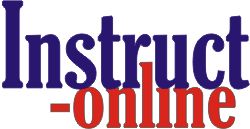
 Phone
(319) 626-2302
Phone
(319) 626-2302
Catalog Number : agl1211
Title : The Indian Ocean Tsunami Response: Lessons Learned in Public Health & Medical Preparedness
Speaker : Scott Lillibridge
Webplay Recording Date : 3-8-2005
Webplay Price : $ 225 for two weeks viewing
The recent Indian Ocean Tsunami on December 26, 2004 killed more than 200,000 persons and affected more than 11 Nations throughout the region. Indonesia was the hardest hit with more than 150,000 persons killed along the western Sumatra coastline. More than 300,000 persons in Banda Aceh region of Indonesia have lost their homes and are now displaced and are dependent on relief agencies for their survival. A relief community composed of more than 100 nations, relief agencies, volunteer organizations, military medical units and UN Agencies responded to the emergency needs in Indonesia. Most of these organizations had programs related to medical or public health services. Dr. Scott Lillibridge worked with the UN Interagency Rapid Health Assessment Team led by the World Health Organization (WHO). The team spent a week assessing the health situation in more than 25 locations along the stricken and inaccessible coastline in the most heavily impacted areas and the most remote regions of Western Sumatra. This presentation reviews the rapid assessment of the health needs of victims following this disaster and reviews some of the obvious lessons of international emergency response for the relief community operating in the health sector. Important issues related to training, organization, health information management, and coordination will be discussed. These issues are universal to public health preparedness in the United States and abroad.
Course Objectives:
- Gain an understanding of how disaster relief systems and coordination agencies operate during a catastrophic event.
- Review the effects associated with the sudden loss of public health and medical infrastructure amid a background of mass injury and disease among a stricken population.
- Explore the challenges of coordinating local, regional, national and international response resources to provide immediate life saving services during a major disaster event.
- Discuss the critical role of rapid health assessments in prioritizing relief activities and targeting subpopulations for urgent relief services.
- Review survey methods technologies that can facilitate such rapid health assessments.
- Obtain a better understanding of the issues associated with restoring potable water, food, sanitation, and disease control measures for a disaster affected population.
Target Audience:
- Hospital emergency medical professionals
- Hospital emergency response planners
- Local and State Public health officials
- Community health clinic emergency response planners
- Local and state emergency management professional
Refund Policy:
Full tuition is refunded immediately on request if the participant has not been sent the program materials and instructions. Once the instructions (including access codes) have been sent, a full refund will be issued only after the program runs and it is verified that the participant did not access the program
.